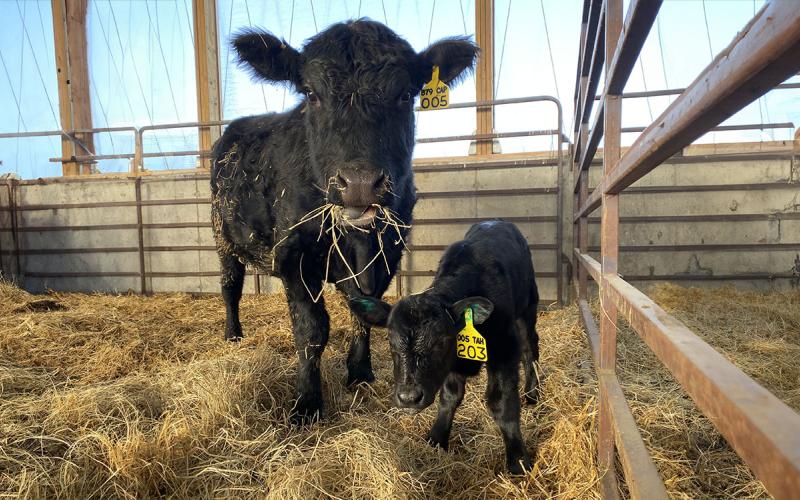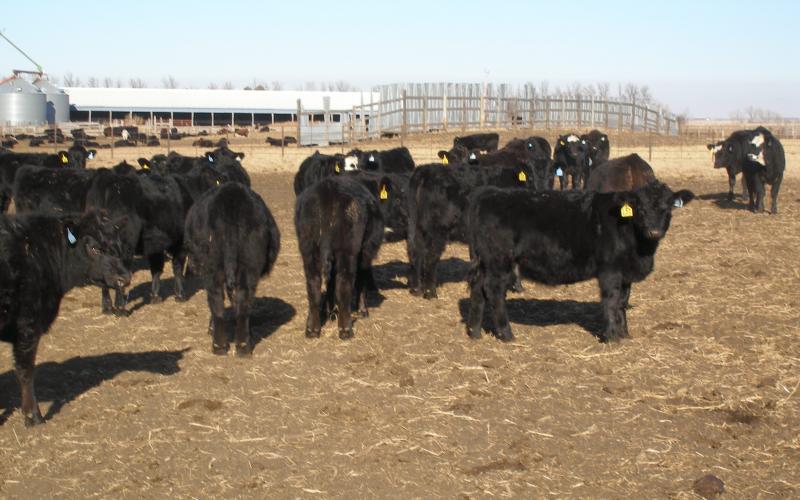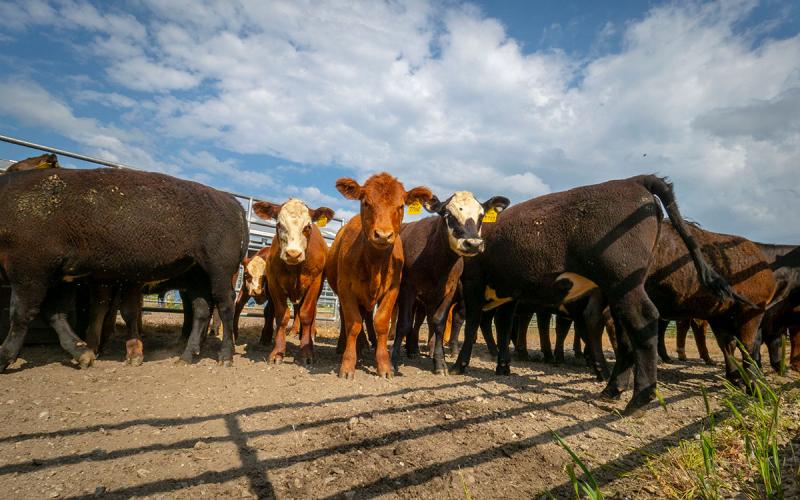
Written collaboratively by Sophie Kyllonen and Dr. Michael Gonda, Professor, SDSU Department of Animal Science. At the time of publication, Sophie was an undergraduate student at South Dakota State University pursuing a B.S. in Animal Science – Production Management Specialization and a minor in Ranch Management.
Why Crossbreed?
Crossbreeding is a proven tool in commercial cattle production to boost productivity and profitability.
By using planned breed combinations, producers can improve traits like growth, reproduction, and overall herd performance, helping make better financial and management decisions (Mississippi State University Extension, n.d.).
Heterosis vs. Breed Complementarity
Heterosis (hybrid vigor) is the increased performance advantage seen in crossbred animals compared to the average of the purebred parents. Breed complementarity means selecting breeds with different strengths to enhance overall performance and make the most of animal performance (Gonda, 2023).
Example of Heterosis and Breed Complementary in Action
Example 1: Crossing Angus to Hereford is a classic example of both heterosis and breed complimentary:
- Angus contributes carcass quality and marbling.
- Hereford contributes longevity and docility.
- Crossbred calves (Black Baldies) are uniform and efficient in breed composition and benefit from heterosis.
- Ideal for producers wanting both growth and maternal strength (Lamberson & Thomas, 2023).
Example 2: Crossing a Black Baldie (Angus:Hereford, Angus:Sim) to Charolais bull is a good example of terminal crosses:
- Black Baldie maintains strong maternal heterosis (fertility, milk, longevity).
- Charolais contributes to growth rate, muscle development, and carcass yield.
- Calves excel in feedlot performance and carcass value.
Potential Benefits
Numbers Don’t Lie…
At a 100-cow operation, switching from straightbred to a 2-breed rotation can add:
- +16% in calf weaning weight (Brandon, 2015).
- +10–20% heavier weaning weights in crossbred calves nursing crossbred cows (Johnson, 2024).
- ~2.5 lb/day extra pre-weaning gain when calves are born one cycle earlier (Johnson, 2024).
Efficiency & Longevity
Crossbreeding improves more than just growth—it improves your cow herd by increasing lifetime productivity and cow longevity:
- 3.7% increase in calving rate and 16.2% increase in longevity.
- Improved udder quality, feet, and structure resulting in less turnover.
- More years in the herd = fewer heifers to raise or buy.
- Increased cumulative weaning weight of calves 25.3% (600 lb. of calf weaning weight over lifetime of cow).
(Weaber, 2015).
Crossbreeding Systems
Choosing a crossbreeding system depends on a number of factors, including:
- Operation size and resources.
- Need for replacements.
- Ability to manage multiple breeding pastures.
- Marketing goals (maternal vs terminal focus).
(Brandon, 2015) and (Lamberson & Thomas, 2023).
Composite System
- Uniform calves and dams.
- Captures maternal heterosis.
- Can raise own replacements.
- Simple to manage in small herds.
Terminal System
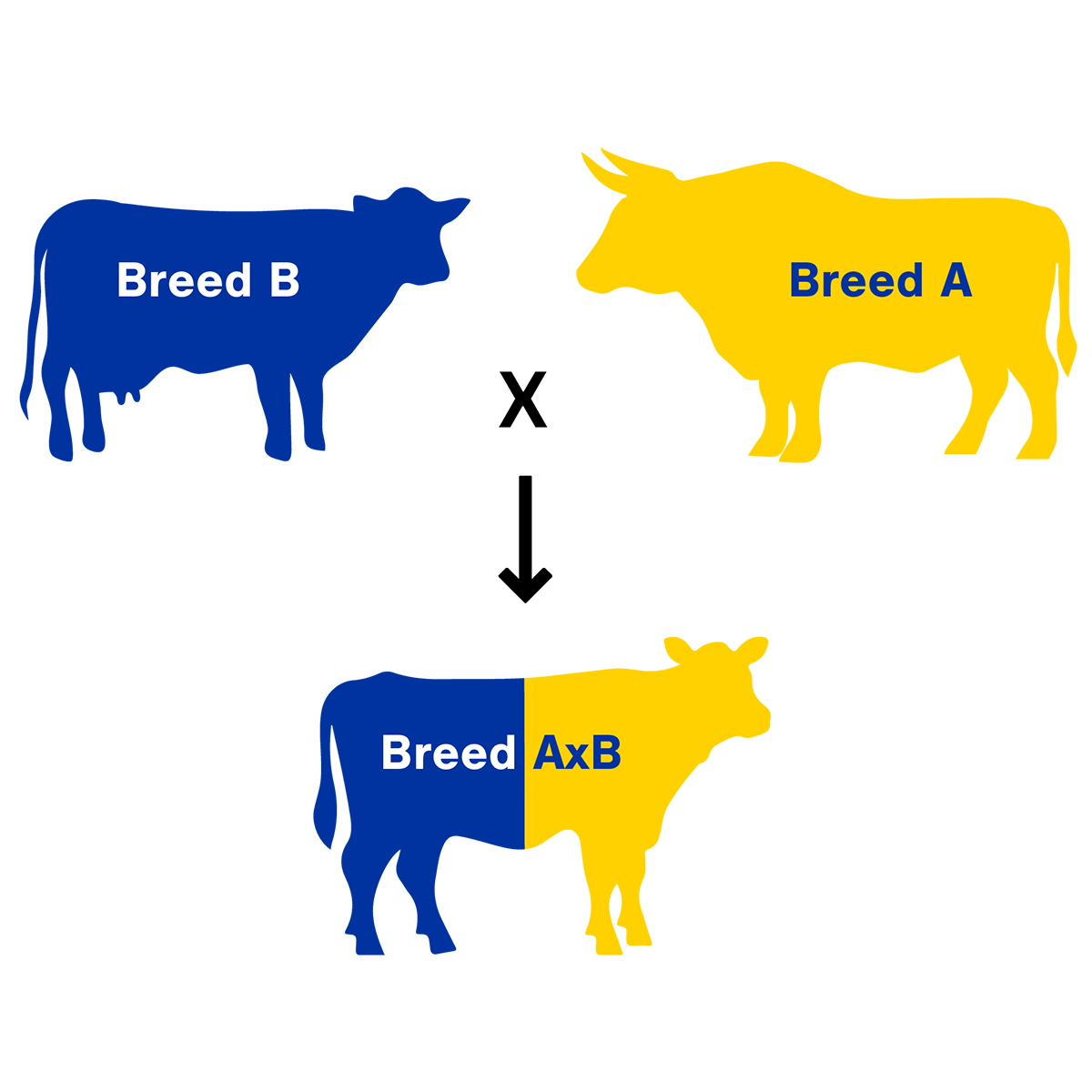
- No replacements kept.
- All calves sold.
- Best for operations that purchase bred heifers or cows.
2-Breed Rotation System
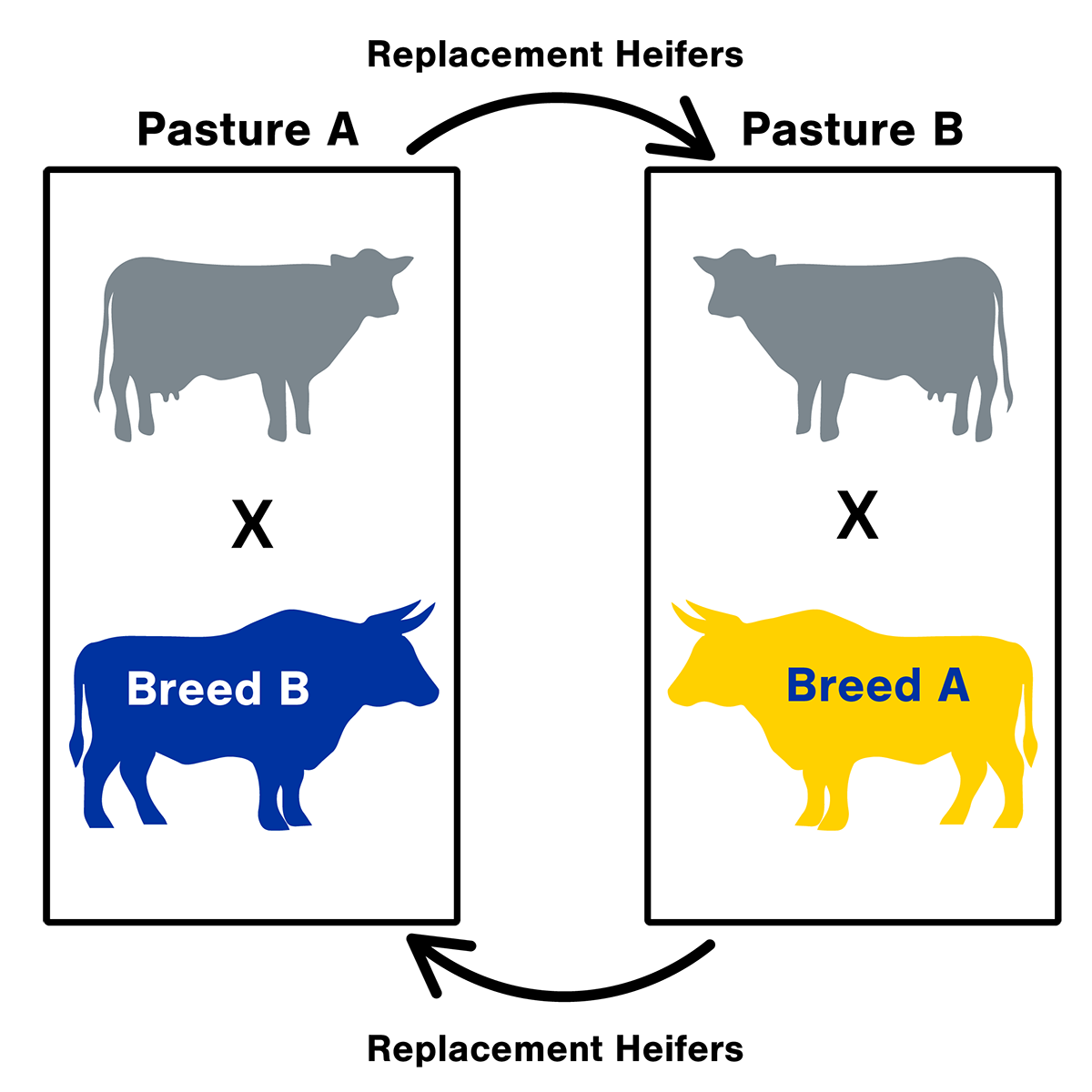
- Retain replacements.
- ~67% heterosis maintained.
- Simple, but calf size and uniformity vary more, especially when breeds used differ in visual traits or mature size.
3-Breed Rotation System
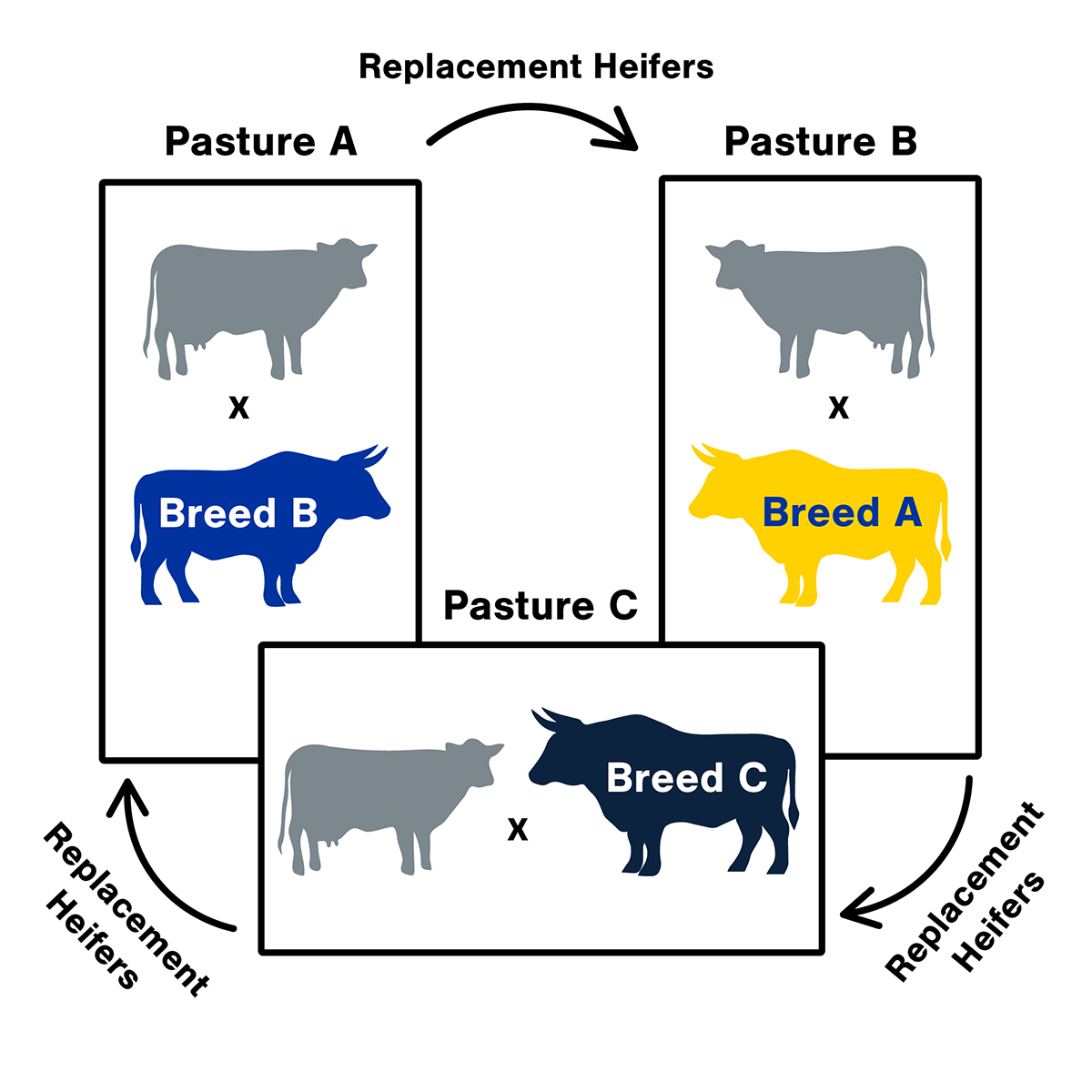
- Adds 3rd breed into rotation.
- 86% heterosis maintained.
- Requires good records and sire management.
Rota-Terminal System
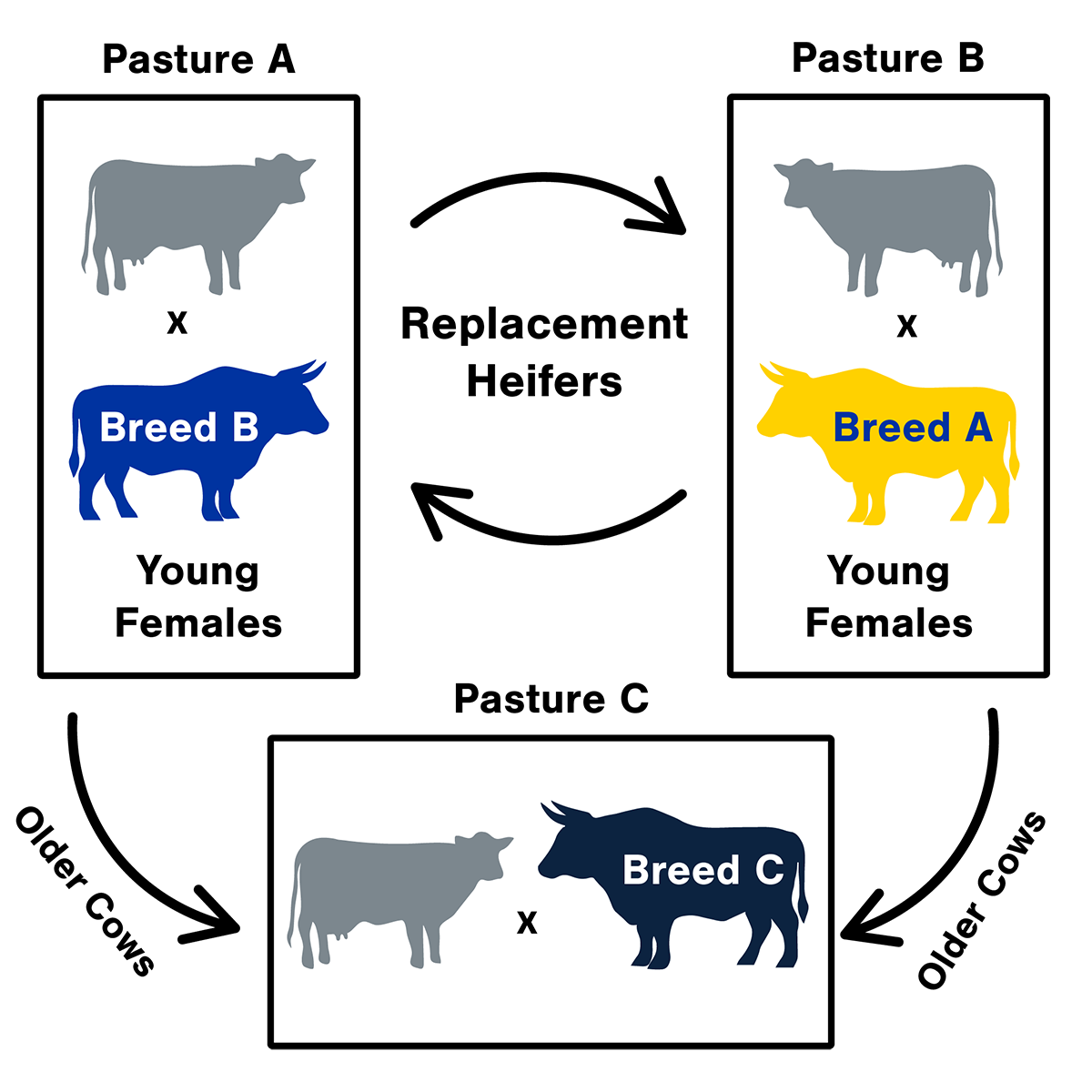
- Combines rotational and terminal systems.
- Young cows = replacements.
- Old cows = bred to terminal sires.
- Balances maternal retention with high-value terminal calves.
- Complex system that requires good recordkeeping and multiple breeding pastures (if using natural service).
*Diagrams adapted from (Brandon, 2015), bullets from (Lamberson & Thomas, 2023), and (Gonda, 2023).
Selection Considerations
Choosing the Right Breed
- British Breeds (Angus, Hereford)
- Fertility, marbling, maternal traits.
- Great for replacements & calving ease.
- Continental Breeds (Charolais, Simmental)
- Growth & muscle.
- Best for terminal calves & maternal performance in some environments.
- Brahman-Influenced (Brangus, Beefmaster)
- Heat tolerance, longevity.
- Suited for southern or harsher climates.
(Brandon, 2025) and (Lamberson and Thomas, 2023).
Using EPD’s to Guide Goals
Focus your bull or cow selection decisions based on Expected Progeny Differences (EPDs) that align with your operation’s goals.
Expected Progeny Differences predict how an animal’s offspring are expected to perform compared to others in the same breed in the population.
(Beef Improvement Federation, 2018).
Terminal Traits
What terminal traits do you want to focus on?
- Marbling.
- Ribeye area.
- Carcass weight.
Maternal Traits
What maternal traits do you want to focus on?
- Calving ease.
- Milk.
- Docility.
Putting it in Action
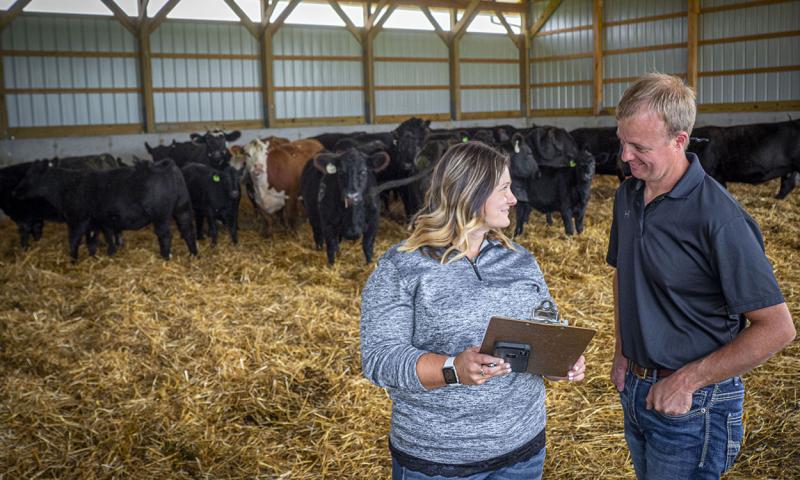
Set your priorities.
Decide if your herd is focused on raising replacements or marketing terminal calves
Match breed with your goals.
Selection of the breeds that best fit your priorities and environment is critical for managing a successful crossbreeding program
- Maternal traits for longevity and calving ease
- Terminal traits for growth and carcass value
Plan your system.
Choose a crossbreeding strategy that fits your herd size, facilities, and labor. Start simple then scale up.
Questions?
For more information, contact an SDSU Extension beef specialist.
References
- Beef Improvement Federation. (2018). Guidelines for uniform beef improvement programs. (9th ed.).
- Brandon, K. W. 2015. Crossbreeding systems for beef cattle. (Publication No. P2508). Mississippi State University Extension Service.
- Gonda, M. 2023. Crossbreeding strategies in the beef industry [Lecture]. AS 492: Beef Cattle Breeding, South Dakota State University.
- Johnson, M. Z. (2024, March). Weaning weight versus reproductive efficiency. Hereford.org.
- Lamberson, B., & Thomas, J. 2023. Crossbreeding systems for small herds of beef cattle. (G2040). University of Missouri Extension.
- Weaber, R. L. (2015). Crossbreeding for commercial beef production. In Beef Sire Selection Manual (pp. 31–38). Kansas State University Agricultural Experiment Station and Cooperative Extension Service.
